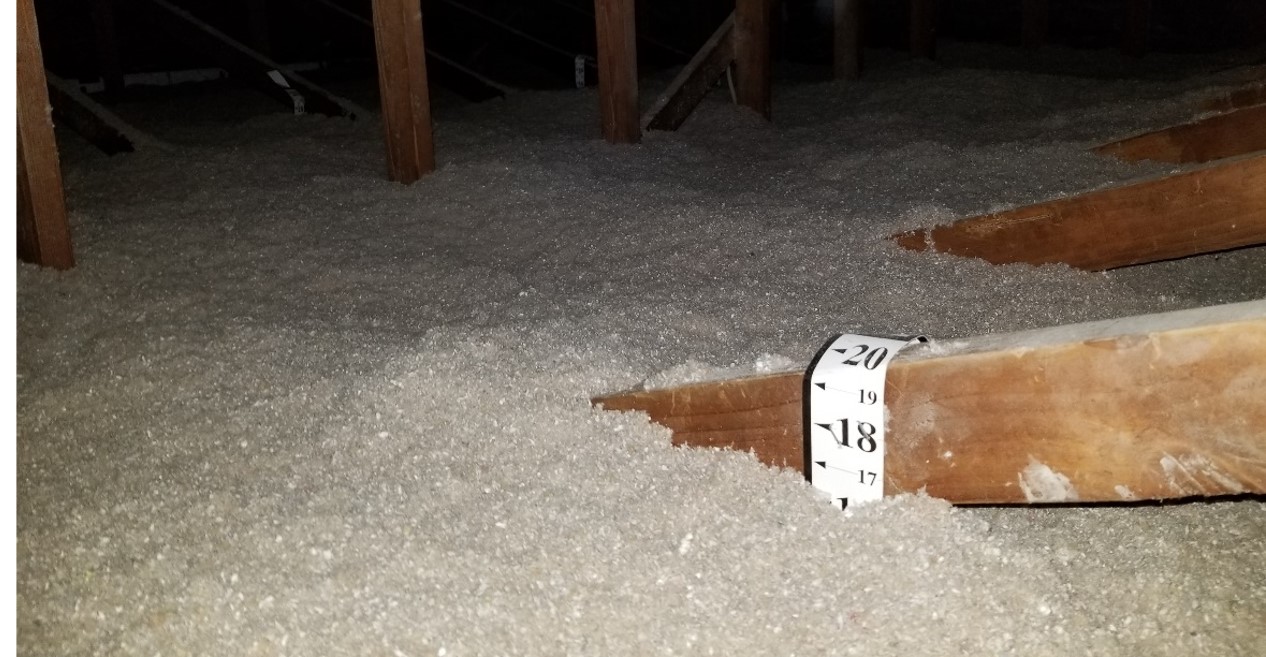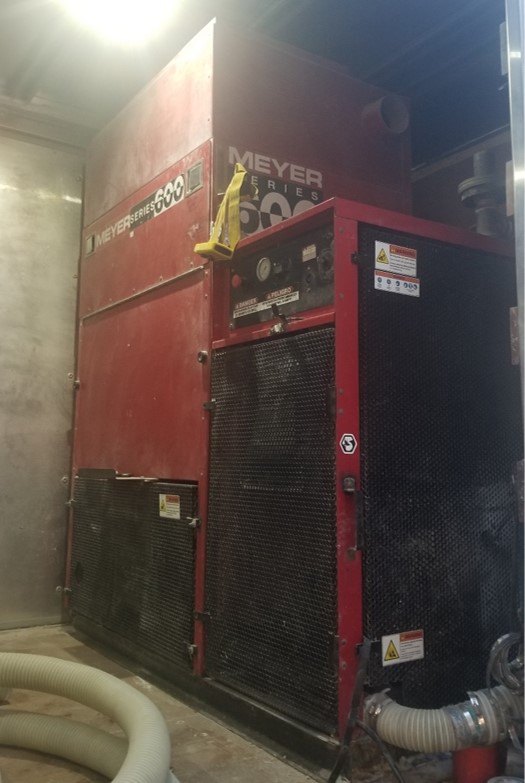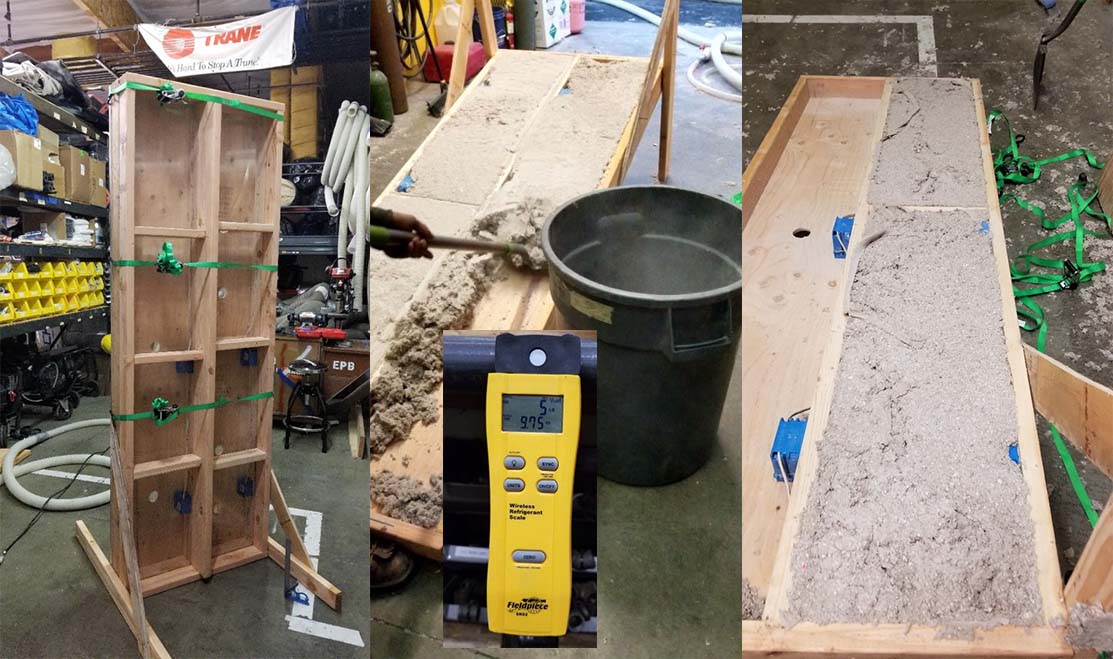Home Insulation – How, Where, What and Why?
 Attic insulation is one of our specialties as a home performance and insulation contractor. We prefer to install stabilized cellulose insulation in attics. When blowing the insulation in it goes through a wetting system which moistens the insulation. The main reasons for installing insulation like this is to minimize dust (both for the installer and the homeowner), it gets into all of the voids better and there is minimal settling of the material. Without installing insulation like this, you cannot see very well and your installation quality will suffer. We are one of the only contractors in the area that installs stabilized cellulose insulation.
Attic insulation is one of our specialties as a home performance and insulation contractor. We prefer to install stabilized cellulose insulation in attics. When blowing the insulation in it goes through a wetting system which moistens the insulation. The main reasons for installing insulation like this is to minimize dust (both for the installer and the homeowner), it gets into all of the voids better and there is minimal settling of the material. Without installing insulation like this, you cannot see very well and your installation quality will suffer. We are one of the only contractors in the area that installs stabilized cellulose insulation.
To be able to install stabilized insulation, you need a big machine capable of pushing the damp material through the tubes. Because we are mechanically minded people we have customized and rebuilt these large machines to work perfectly to ensure installation quality.
Before we install insulation in an attic we need to make sure that there is no active knob and tube wiring, we have air sealed the attic floor, and if there are ducts there, that they are leak free and correctly sized.
Wall Insulation
Wall insulation in an existing home is a great thing to do but is complicated. It is great because that added square footage of insulation is huge! It’s complicated because we have to drill a lot of holes in your home and because we can’t see what’s going on, it is difficult to ensure the quality of the install.
Drilling holes: We have been building, remodeling, and fixing homes since the 90’s and we know a lot about how they are built. Because of you moisture barrier, we do not recommend drilling holes on the outside of your home, which will definitely interrupt your moisture barrier. Instead, we drill holes from the inside of your home, following lead safe practices, install the insulation and patch the holes. It is very nice knowing that your walls will stay safe and dry after your walls are insulated.
Quality: Because we can’t see the install happen we use a few techniques to ensure our installation is perfect.
- Density: The material that is filled in your walls needs to have the correct density otherwise it won’t work as well as an insulator and it will settle. To make sure the density is correct we fill a test box with the material and measure the weight of it. Before each install, we are making changes to our machine’s settings to ensure the density is correct.
- We use a tube to install: We tested all the ways to install wall insulation on a test wall we built and the tube method is by far the best way. Most installers use a 90 degree turn on their hose to point the material up and down but this way yields terrible quality. The tube is installed on the bottom of the wall and pushed to the top then slowly pulled down as pressure builds. This makes small layers of compaction down the entire wall cavity with very consistent precise density.
- We Practice! Practice makes perfect and by using our test wall in the shop the crew can see their installation quality through the plexi glass backing. We can add outlets, wires, pipes, or framing to challenge them. Once complete and visually inspected through the glass we weight the material inside to check the density. If an installer’s experience doesn’t allow them to look at or measure the quality, how can they know if they’re doing a good, let alone great, job and how can they improve and train other
- Infrared Camera: We use an infrared camera to find the blocks in your walls so we know the layout of your framing members. We also use the camera to inspect our work to make sure we didn’t miss a small corner of a bay. There are small cavities framed off in your walls and it is impossible to know if you got it all without the infrared camera.
Floor insulation is a good option for existing homes because it is a non-intrusive installation. A lot of the time wall insulation is not a cost effective solution and it is very intrusive. We have been able to leave the walls empty on 100 year old houses and still put in the smallest heaters and air conditioners made with great comfort and efficiency. We typically use fiberglass batt insulation for floors.
Quality Attic Insulation Installation:
[nggallery id=7]
Quality Floor Insulation Installation:
[nggallery id=5]
EPB is trained in Energy Star and QII (Quality Installed Insulation) and, during an energy assessment, performs a detailed inspection of your insulation’s quality and performance. Insulation only works when air is not passing through it and our checks make sure that there is a continuous air barrier with your insulation thermal barrier. Your insulation is a key part of your homes thermal envelope. Our comprehensive test utilizes the blower door, a temperature difference from inside to outside and an infra red camera. The infra red camera is crucial in finding air leaks through wall cavities and insulation voids.
[nggallery id=20]
If we determine that you need additional insulation we will install it to the highest standards. Before installing any insulation we will make sure there is an effective air barrier. After installation of new insulation we test our work with an infra red camera and blower door to make sure that the thermal envelope is working properly.
Get in contact:
[dropshadowbox align=”none” effect=”lifted-both” width=”640px” height=”” background_color=”#ffffff” border_width=”1″ border_color=”#dddddd” ]For more information about Home Insulation or residential energy, call (925) 363-4498 to speak to a technician or schedule an Energy Assessment. You can also e-mail: info@epbuilders.com[/dropshadowbox]
Read our Testimonials from happy homeowners!
Photos of the variety of Home Performance Services we provide on a weekly basis:
[nggallery id=27]



